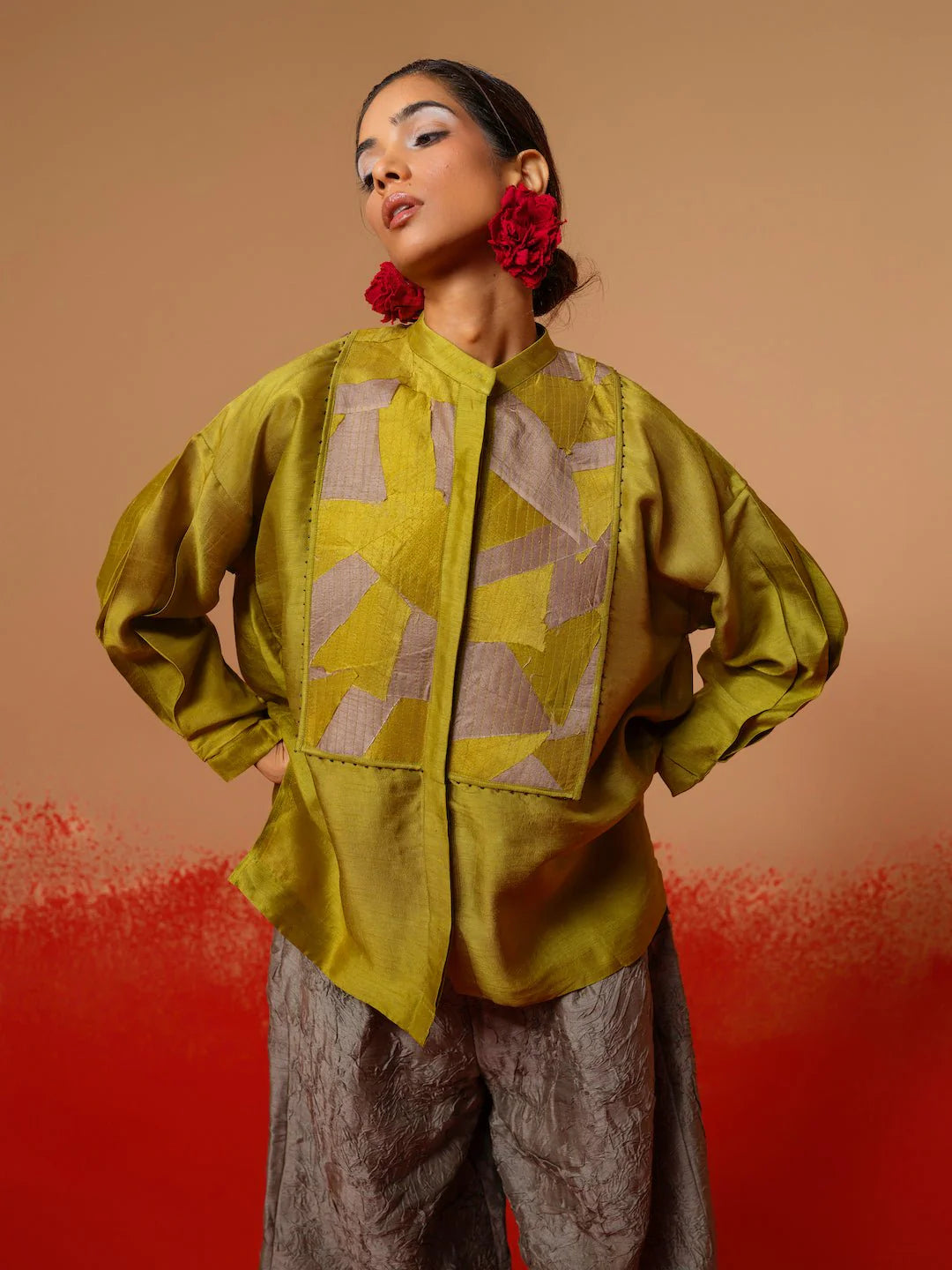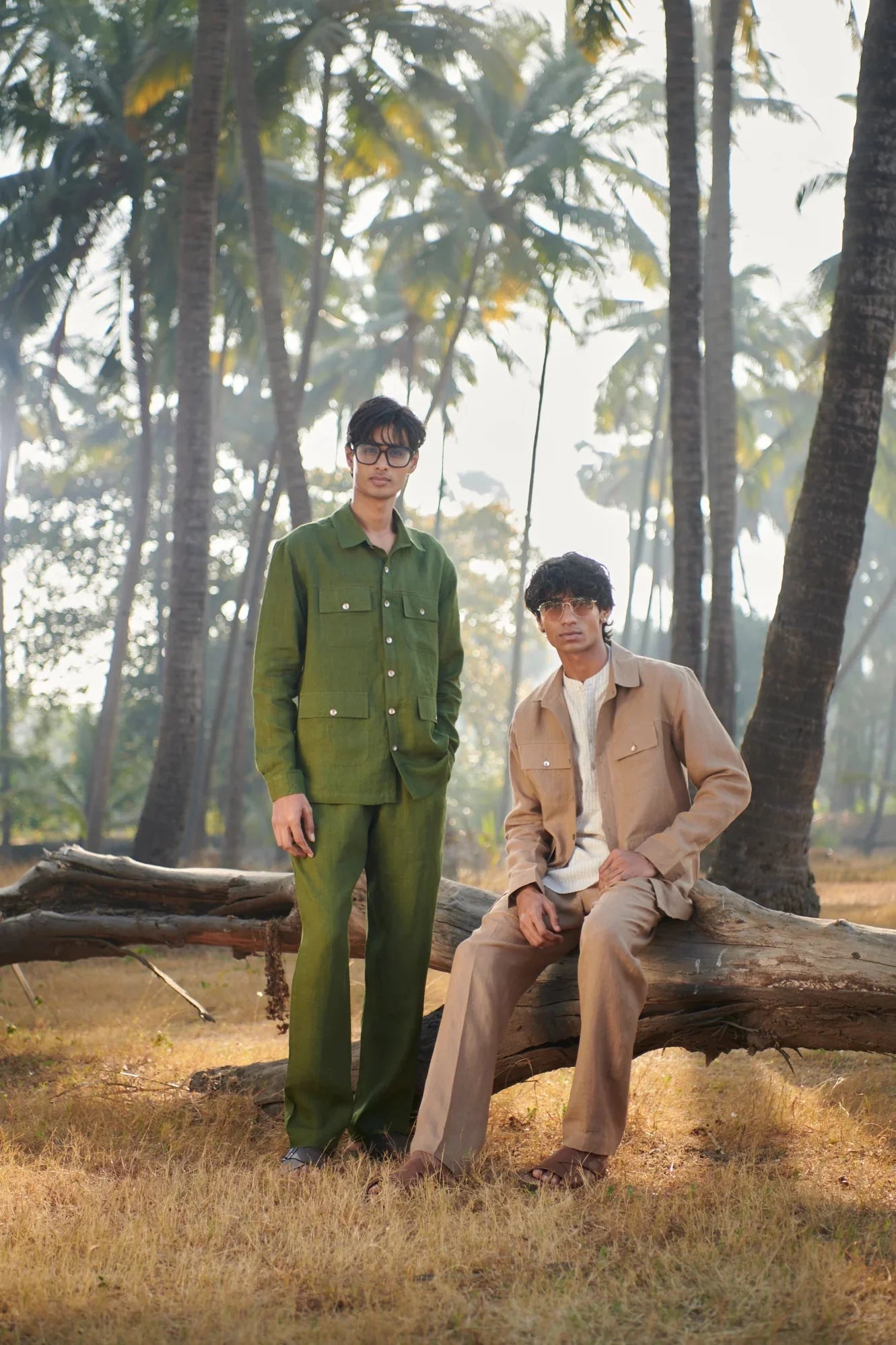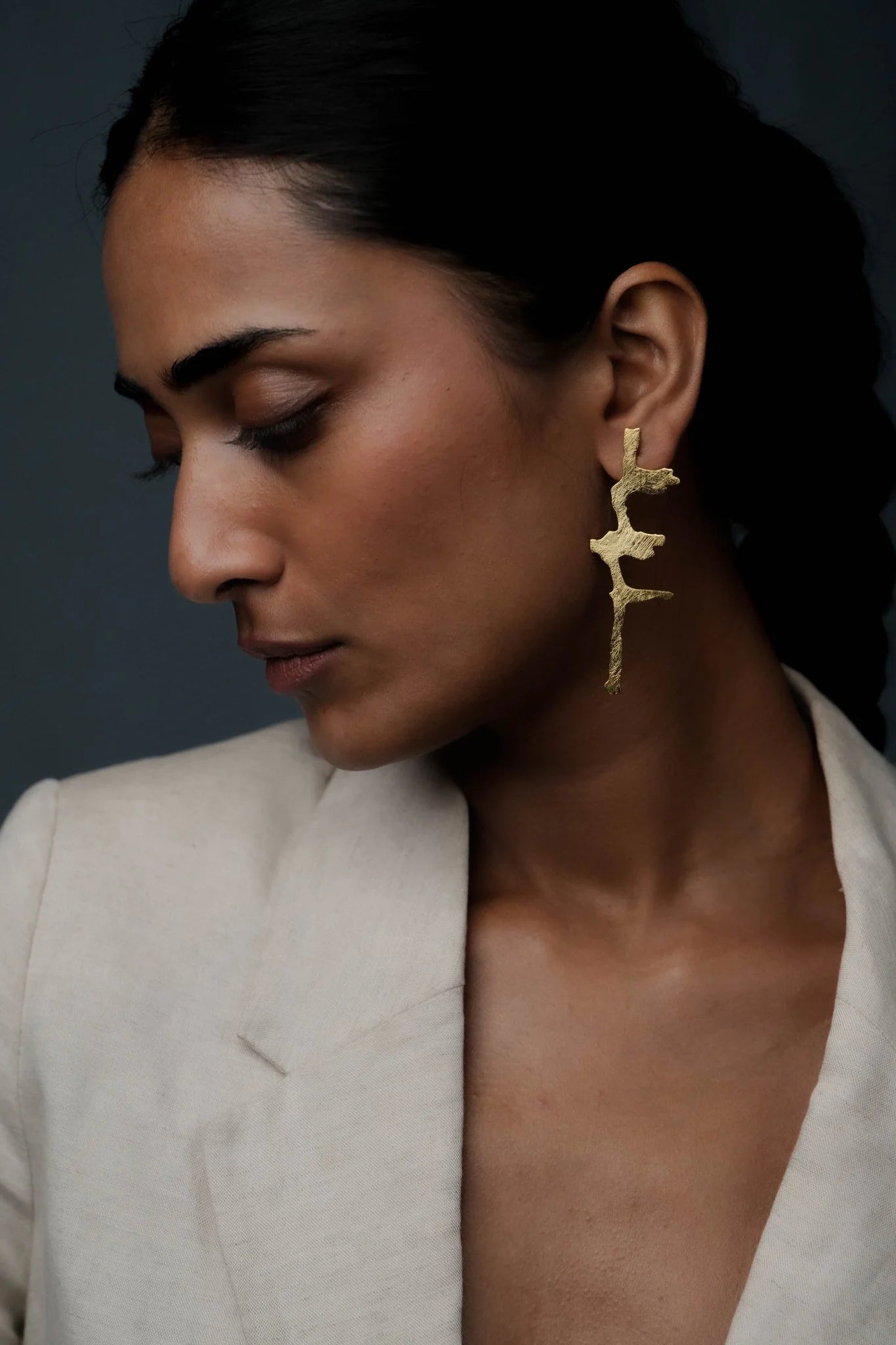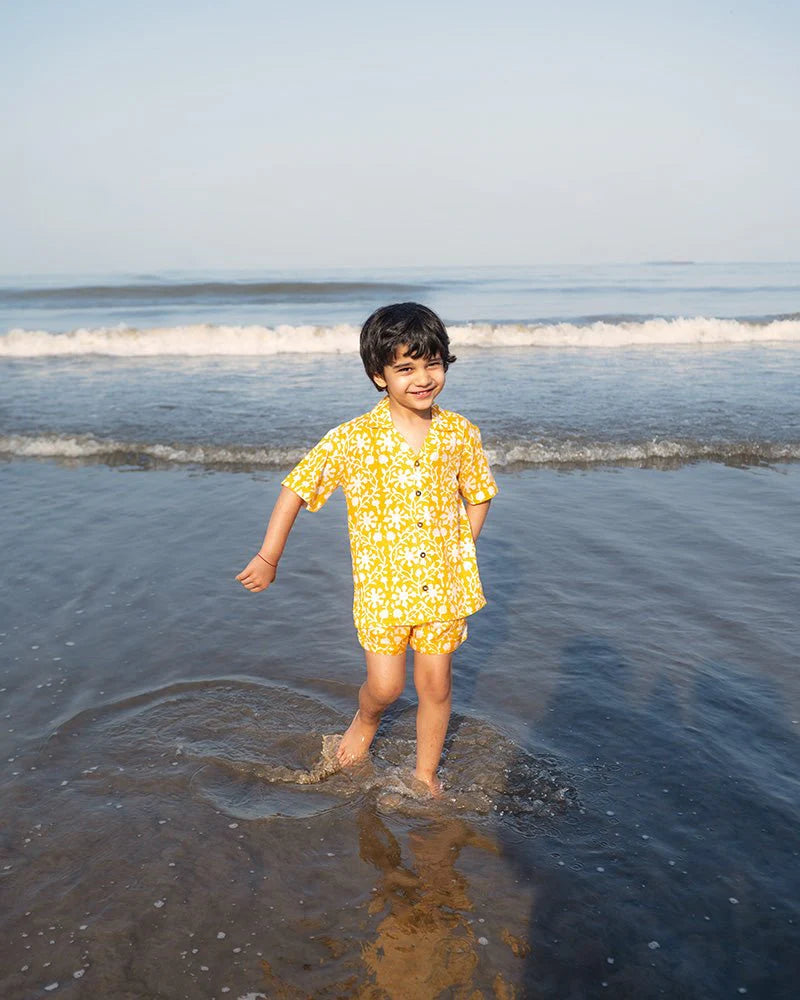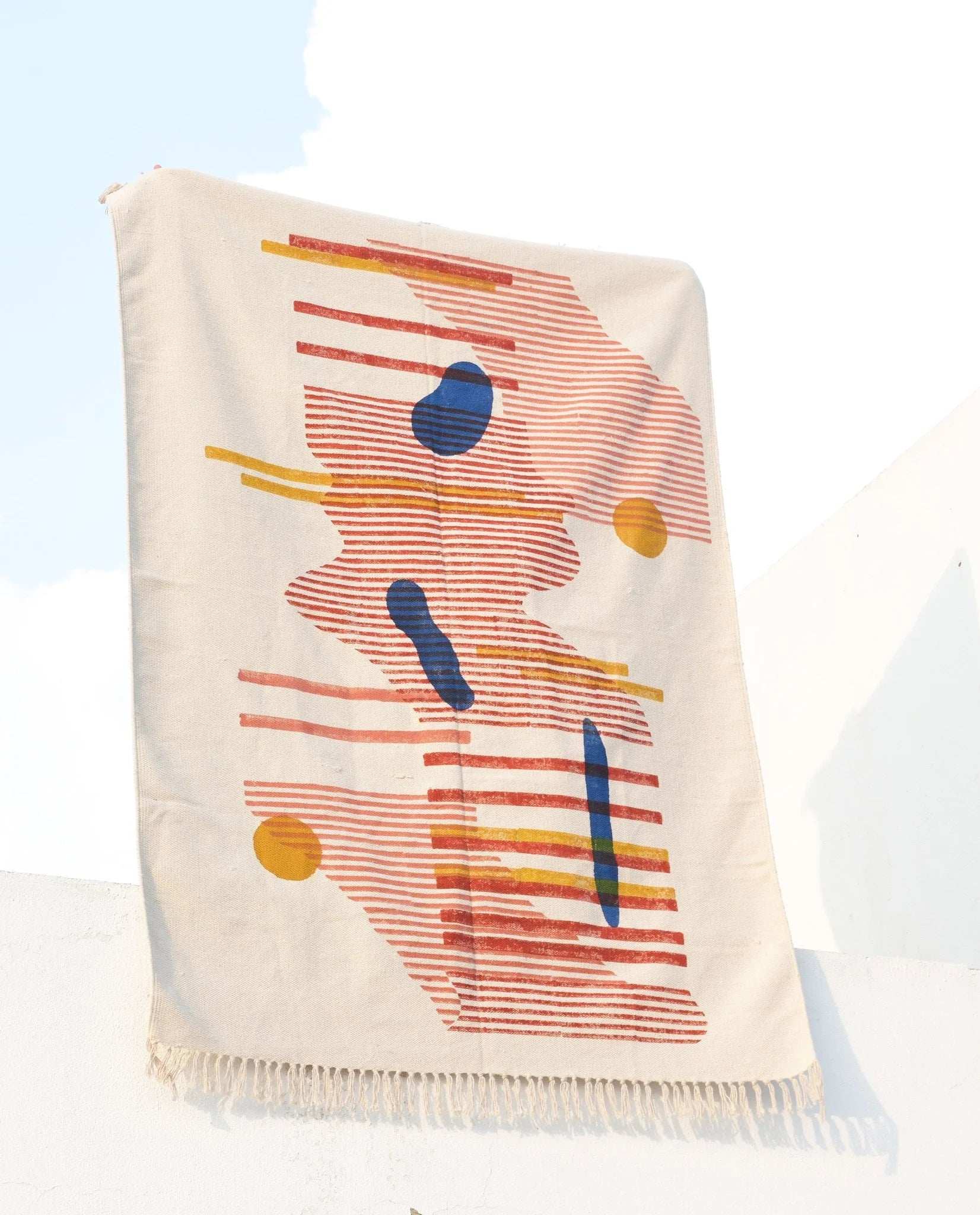“I believe there’s no rise or fall of Indian craftwork, it is timeless and will never go out of style,” says Zakiya Khatri, a 4th generation Bandhani Artisan from Bhuj, Gujarat.
Remember the first time someone handed you a kaleidoscope and invited you to look inside? Perhaps you were skeptical, but when you peered in, you were amazed by the burst of color and intricate design at the other end. Bandhani is the kaleidoscope of fashion, an Indian heritage passed down from generation to generation. Artisans passed their craftwork to their children and bandhani wearers and collectors passed the cloth as an heirloom, a treasurable keepsake.

There are several legends and stories linked to the origin of Bandhani. The ancient “Bandhani,” or Indian Tie & Dye technique began around 5000 years ago in the Indian states of Rajasthan and Gujarat. Many believe and attribute the Muslim Khatri community of Kutch as some of the first to use this form of dyeing.


The tye-dye technique differs to create varying patterns, however, at the base of it, it involves tying meticulous knots by hand on the fabric and then resist dying it. “Apart from using stencils rather than blocks to create patterns, nothing has changed in the process over the years,” says Zakiya Khatri






“While Bandhani is still relevant, contemporizing it leads to a rise in interests and a way forward to reach more markets,” says Adil Khatri, Alumni of Somaiya Kala Vidya and Founder of Nilak – Design Your Dreams on the modern-day interpretation of bandhani in millennial life. Bandhani is no more restricted to red and maroons; Adil remarks that the demand for pastel coloured Bandhanis have increased two-folds over a couple of years. The normcore Bandhani has taken a chic form with colours such as Wine, Burgundy, Powder Blue, and Steel Grey.

Shubhika Davda of Papa Don’t Preach reimagined Bandhani with her “Not Just A Girl Dress” under the Notting Hill 2019 collection. The outfit consists of pearls, evil eye beads and gold coin high waist embellished neon pink leheriya skirt with a bralette and an OTT bow bringing up the back. Nupur Kanoi reinvented the Bandhani lehenga by turning it into a draped skirt and pairing it with a tie-dye crop top in a royal blue colour. Naina Jain explores fusion with traditional Bandhani, amalgamating it with Chikankari, Meenakari, Banarasi Brocade, and Organza.


Talking about his latest collection, Adil says “Along with the nuances of traditional craftwork, we incorporate different perspectives. From Dots to Leheriya, people have moved on to newer and distinctive designs” Currently Adil is developing a new collection that is inspired by Indian Architecture, the tie-dye includes creating “Jaali” patterns or “Carving” texture prompted from Stone Carving found in pre-historic caves and temples.

The soul of the craft is the artisan that makes it. This age-old craft, apart from their bread and butter, is a huge part of their culture. The artisans receive the skill and intelligence as legacy and they pass it to the further generations. Over the years, with the introduction of power looms and cheap replicas, the community has faced hardship.

According to Voice of Research, “most commercialized craft aims for quick, standardized and low-cost replication. This imitates the factory model. The strength of hand-craft, artistic vision involved and handmade quality are forgotten. The net result is that even when artisans can earn a living by producing contemporary versions, most do not wish their children to be artisans.”
One of the dedicated individuals working to bring change and reviving this age-old craftwork by empowering artisans is Judy Frater. She is the Founder Director of Somaiya Kala Vidya, an institute of education for artisans.
She gave us more insight into the lives of the artisans and the contemporizing of the craftwork in our weekly segment “Candid at Ciceroni“, a live interactive platform that fosters dialogues in the fashion community. “I flew to India (Pune) to learn more about craftwork and textiles for a project, one thing led to another and I found myself in Kutch exploring the riot of colours and textiles and as well as the fierce and fascinating communities.” While exploring Kutch and meeting with various artisans, she came across someone who told her “Why are you studying this? You should help us.”

On the current issue of how craftsmen are dealt with, Judy comments ” I think the biggest problem is not recognizing their (artisans) huge capability. Artisans are thought of as workers to do someone else’s work – hands without heads! People do their best work when they have ownership. And in that case, the issue of quality is a moot point.”

Owning and knowing Bandhani is an art in itself, the travesty is that even the biggest aficionados of handlooms and handicrafts are seldom able to differentiate between genuine handmade products and factory-made replicas. Zakiya Khatri says “A handcrafted Bandhani has an artistic touch, that is, it will not be perfect and it will certainly not be even” It is important to know that a traditional handcrafted Bandhani cannot be stored the same way as any other ensemble.
Both Adil and Zakiya recommend not folding the Bandhani fabric while storing it. “Instead, roll it and wrap it with a cotton or a muslin cloth and avoid using naphthalene balls, use clove and cardamom to make sure it is not infected by moths or other bacteria.” If you do not have a traditional Bandhani outfit in your wardrobe you are missing out. Nothing can match this fabric with centuries of culture and heritage attached to every warp and weft.
“To fully experience and appreciate bandhani, it must be touched, felt and worn to get a sense of the softness of the silk and the rich texture of the tied pattern.” – Ruth Clifford (Travels in Textiles)

